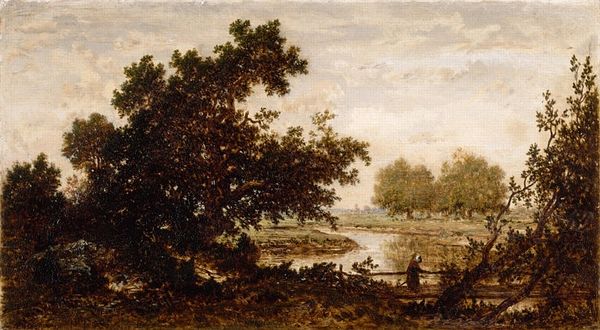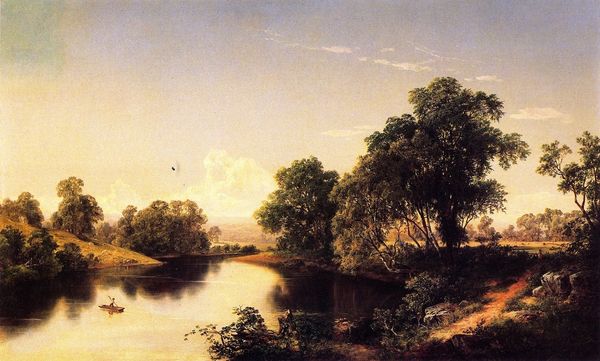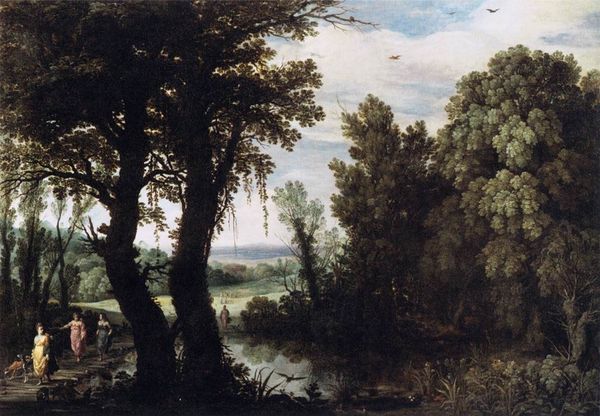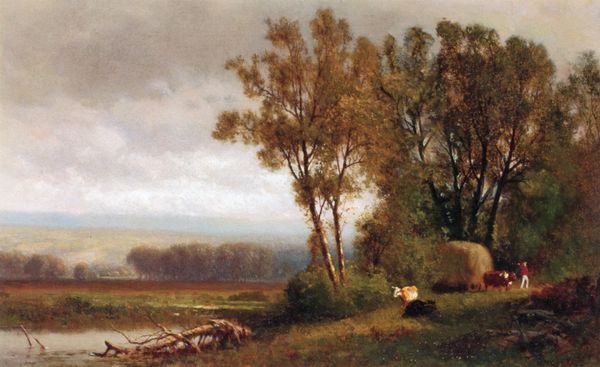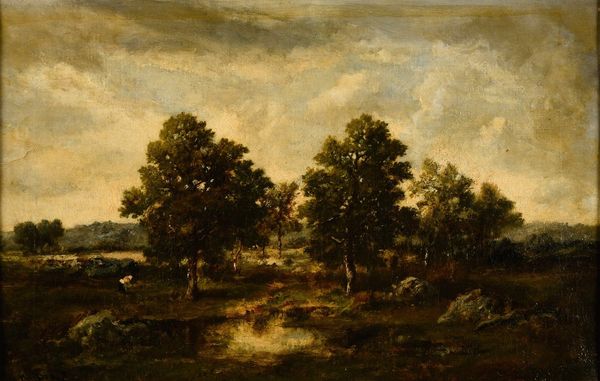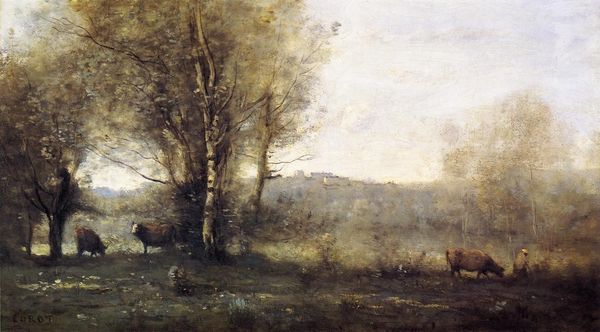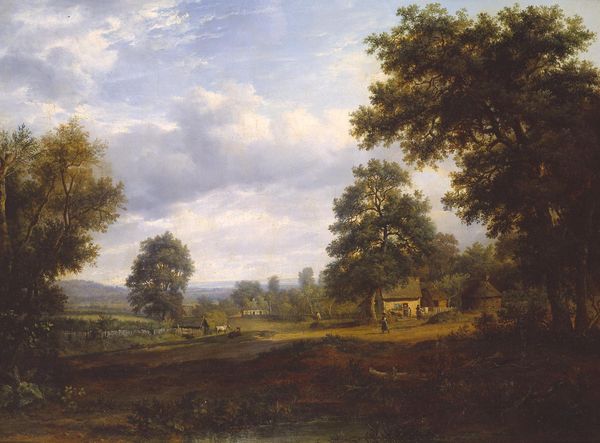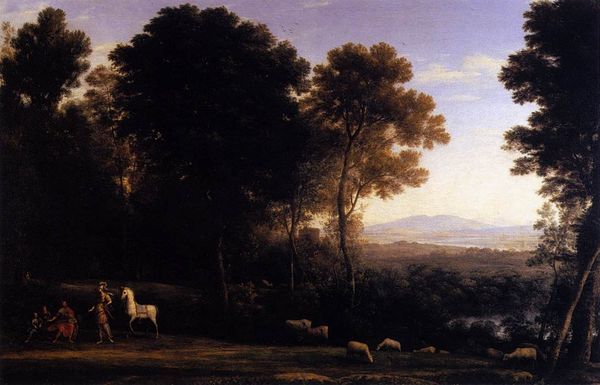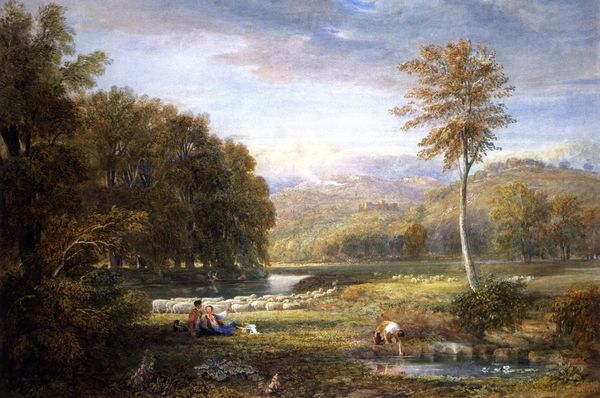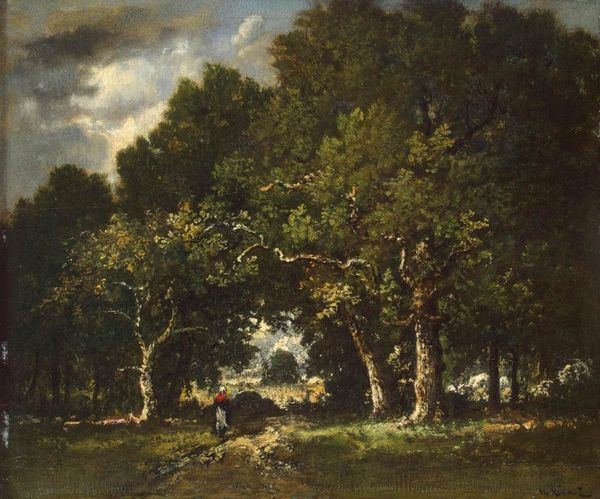
painting, plein-air, watercolor
#
portrait
#
tree
#
sky
#
painting
#
plein-air
#
landscape
#
river
#
figuration
#
form
#
oil painting
#
watercolor
#
romanticism
#
natural-landscape
#
watercolor
Copyright: Public domain
Editor: We’re looking at “Lugg Meadows, near Hereford,” painted by David Cox in 1811. It's an airy watercolor, and immediately striking is how Cox uses light – it seems to emanate from the horizon, almost washing out the scene. What do you see in terms of its structure and composition? Curator: Observe how Cox employs layering and transparency inherent to the watercolor medium. The subtle gradations of tone in the sky, achieved through washes, create a sense of atmospheric perspective. Consider the deliberate placement of the trees. Do they frame the central open space or disrupt a naturalistic gaze? Editor: I hadn't really noticed that until you mentioned it, the use of the trees and shadows in the immediate foreground almost forces your eyes to go toward that brightly lit middle ground. Curator: Precisely. Cox guides our visual path using chiaroscuro. Examine the relationship between the defined edges of the trees and the blurred treatment of the distant landscape. This dichotomy affects spatial comprehension within the picture plane. Also consider the role of line; notice where Cox chooses to define forms with sharp lines, and where he prefers to suggest forms through subtle tonal shifts. What do you notice? Editor: The trees up front are so sharp and defined compared to the almost misty background, it is really striking and separates the painting into those separate zones that we see from foreground to background. What effect do you think this adds to the visual dynamic of the piece as a whole? Curator: By alternating clarity and vagueness, Cox constructs a visual rhythm. A dialogue emerges between meticulous detail and ephemeral suggestion. Editor: I guess it highlights both form and feeling. Curator: A astute reading. Ultimately, it’s through the interplay of form, line, and value, that we engage in our appreciation of this painting.
Comments
No comments
Be the first to comment and join the conversation on the ultimate creative platform.
